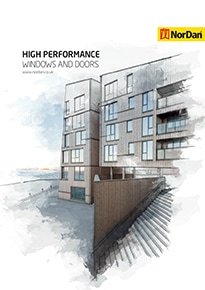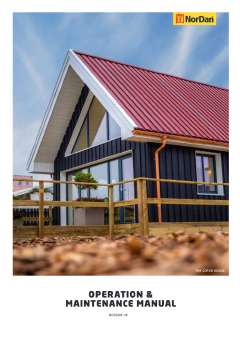Customer Service
There is a lot to consider when choosing new windows and doors from NorDan. At our customer service centre, you will find what you need to be a little more prepared both before and after the delivery of your windows.
Livingston (Head Office)
Tel: 01506 449 197
Email: customer.service@nordan.co.uk
Increase the lifetime
Maintenance
Take good care of your NorDan products. Good maintenance increases the lifetime on doors and windows.
NorDan
Warranty and claims
NorDan provide products of highest quality. Should there still be something wrong with a product purchased, please contact your nearest sales office or raise an issue with the below tab.
READ MORE & REPORTFogging may occur on the inside (room side) of the glass. Common causes are:
- Excessive indoor humidity and poor ventilation (especially in new buildings)
- Low temperature indoors
- Poorly insulated panel
Interior fogging is not a sign of a defect in the pane.
In cold periods, we (and most other window manufacturers) have received a number of enquiries regarding condensation that froze on the inside. We have therefore asked our glass suppliers to provide us with some information about this.
- Information about interior fogging.
- Information about fogging on the outside of the glass
- Information about condensation and icing on the cylinder sets for doors in winter.
- NorDan's new NTech products and installation suggestions for better, more proper installation of windows in walls
Fogging may occur on the outside of the glass. Common causes are:
- The relative humidity of the location. The higher the humidity, the greater the risk of condensation/fogging.
- The U-value or insulation level of the panel. The better the panel is insulated, the less heat is applied to the outer pane. The surface is then cooler, increasing the risk of fogging on the outside
- The temperature inside the room.
- Blockage, i.e. heat from the panel cannot radiate freely into the sky.
Exterior fogging is not a sign of a defect in the pane.
This may be due to cold drafts
Cold drafts occur when air is cooled by a window. The cooled air is heavier than air in the rest of the room, so it sinks or "races" downward. The air is pushed across the floor by its own weight, giving the impression of a draft. There are three factors that affect drafts: the height, size and surface temperature of the window. The colder and higher the window, the faster the air will sink and the greater the "draft". NOTE! Underfloor heating will not prevent cold drafts by the window.
For better comfort and warmth, use NTech Passive or NTech 1.0 which produces far less cold drafts.
The U value, or heat transfer coefficient, indicates how good the thermal insulation of a window is.
The lower the U-value, the better the insulation. For every decimal reduction of U-value of the window, you get an annual energy savings of 10 kWh/m2 window area. Try our energy calculator.





